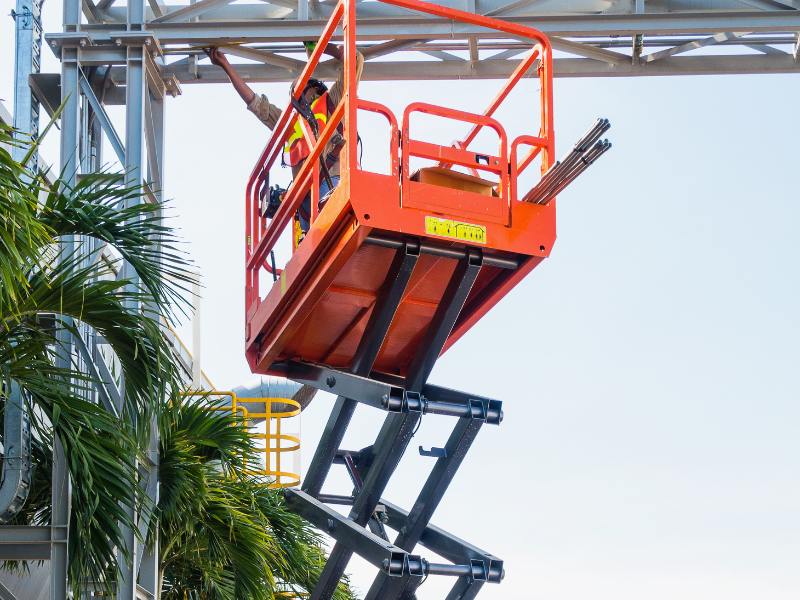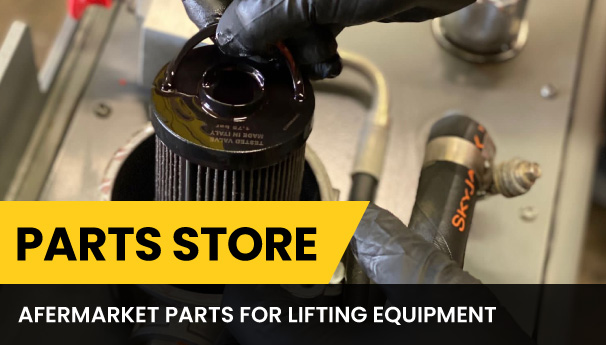Maximizing Safety and Efficiency: Proper Use of Electric Scissor Lifts According to OSHA Guidelines
Electric scissor lifts are indispensable tools in various industries, providing safe and efficient access to elevated work areas. To ensure their proper use and minimize risks, it’s crucial to adhere to the guidelines set forth by the Occupational Safety and Health Administration (OSHA). In this blog post, we’ll explore OSHA’s guidelines for electric scissor lift operation and how they contribute to a safer work environment.
Understanding Electric Scissor Lifts:
Electric scissor lifts are versatile aerial work platforms designed to elevate workers and equipment to elevated areas safely. They are powered by electric motors, making them suitable for indoor use due to their emission-free operation. With their compact design and maneuverability, they are invaluable tools in construction, maintenance, and other industries requiring work at height.

OSHA Guidelines for Electric Scissor Lifts:
OSHA provides comprehensive guidelines aimed at promoting safety in the use of electric scissor lifts. These guidelines encompass various aspects, including training, equipment inspection, safe operating procedures, and maintenance.
Training and Certification:
OSHA mandates that all operators of electric scissor lifts undergo proper training and obtain certification before operating the equipment. Training should cover equipment operation, hazard recognition, emergency procedures, and fall protection measures. Additionally, refresher training should be provided periodically to ensure continued competence.
Pre-Operation Inspection:
Operators must conduct a thorough inspection of the electric scissor lift before each use, as per OSHA guidelines. This includes checking for any signs of damage, hydraulic leaks, or malfunctioning components. Any identified issues should be addressed promptly before operation.
Pre-Operation Inspection:
Adhering to safe operating procedures outlined by OSHA is crucial to prevent accidents and injuries. Operators should adhere to weight capacity limitations, assess terrain stability, utilize fall protection equipment, and maintain proper positioning within the platform. OSHA also prohibits the use of scissor lifts as mobile scaffolds or for towing purposes.
Fall Protection:
OSHA requires employers to provide and ensure the use of fall protection equipment, such as harnesses and lanyards, when working from elevated platforms. Employers must also ensure that guardrails and other fall protection mechanisms are in place and properly maintained.
Emergency Procedures:
Operators must be trained in emergency procedures, including lowering the lift in case of power failure or equipment malfunction, in accordance with OSHA guidelines. Employers must establish and communicate evacuation protocols and ensure that workers know how to summon assistance in case of emergencies.
Regular Maintenance:
OSHA recommends regular inspection and maintenance of electric scissor lifts to ensure their safe and reliable operation. This includes following the manufacturer’s maintenance schedule, lubricating moving parts, and promptly addressing any identified issues.

Conclusion:
Adhering to OSHA guidelines is essential for promoting a safe work environment when using electric scissor lifts. By prioritizing proper training, equipment inspection, safe operating procedures, and maintenance practices, employers can minimize risks and ensure the well-being of workers. Remember, compliance with OSHA regulations is key to maximizing safety and efficiency in the use of electric scissor lifts.
Remember that battery maintenance practices may vary based on the specific model and type of batteries your electric scissor lift uses. Consult the equipment’s manual for manufacturer-recommended maintenance guidelines tailored to your equipment. Proper battery maintenance will not only extend the lifespan of your scissor lift but also contribute to safe and efficient operations.





